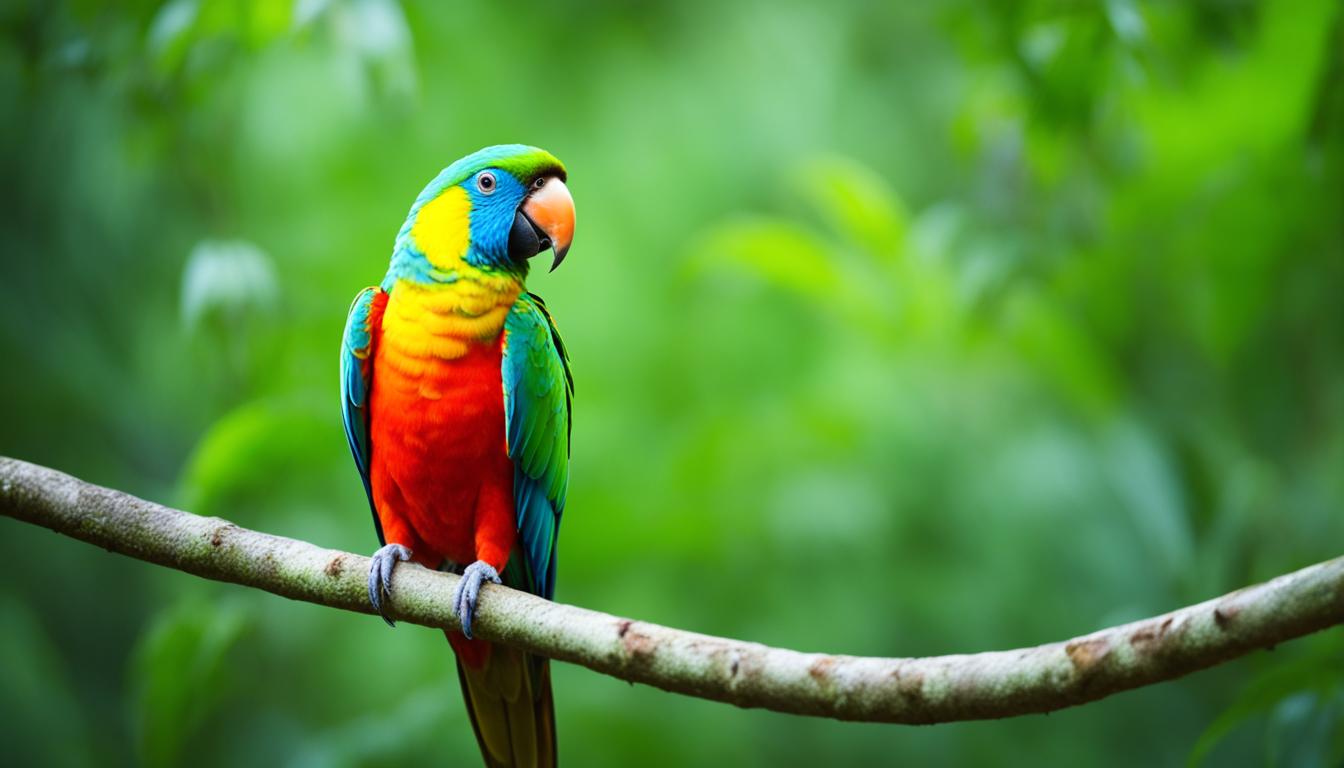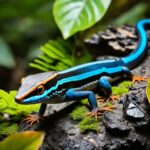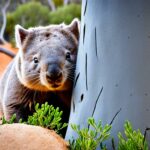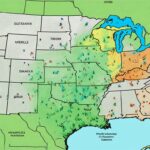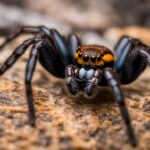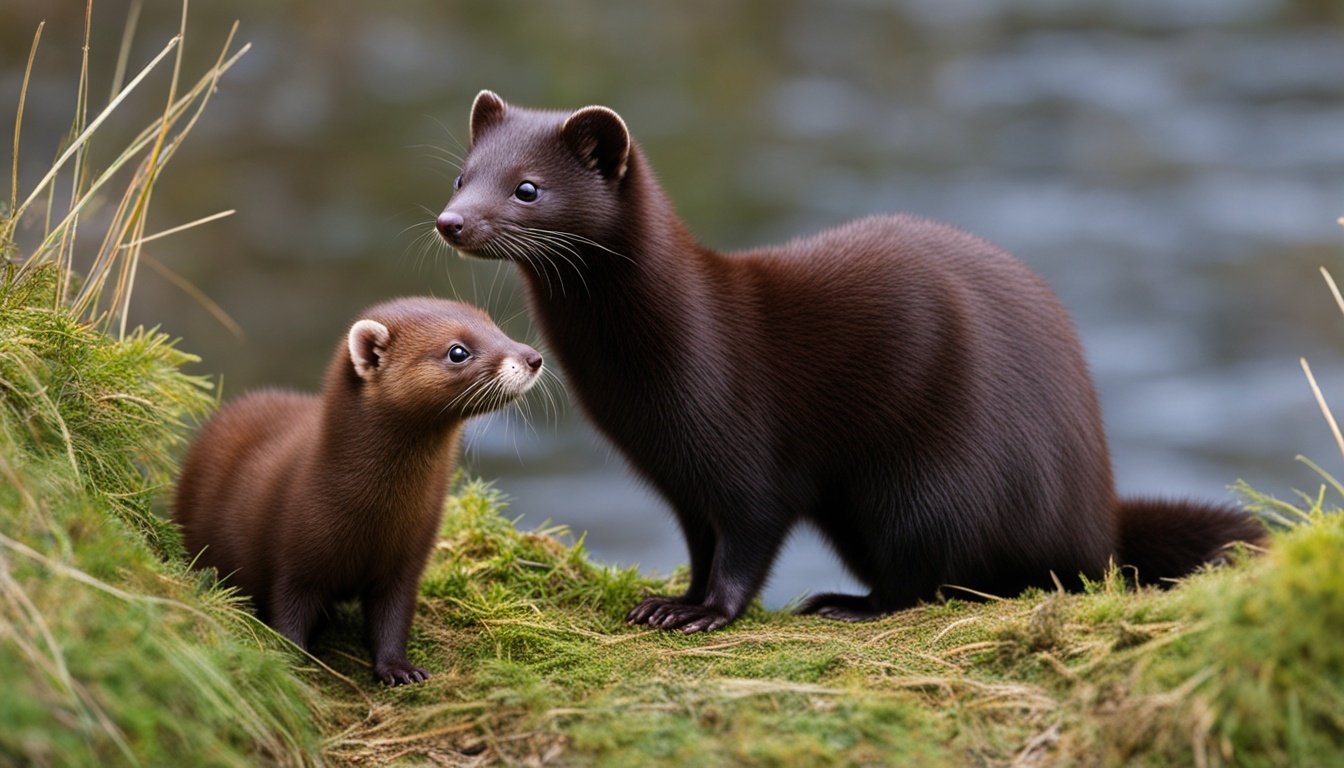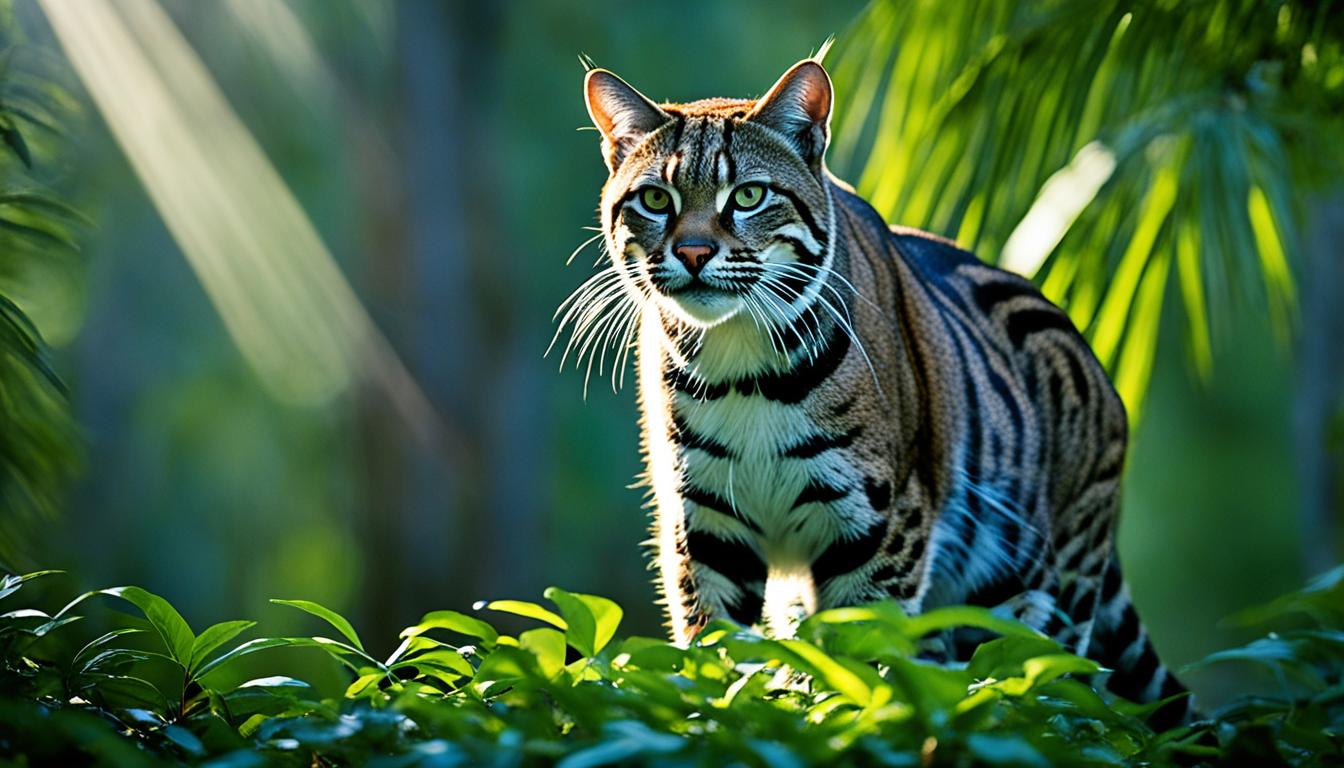Have you ever wondered, are there any native parrots in the USA? It’s interesting to explore the country’s bird history. In the past, the United States had two parrot types that were only found there: the Carolina Parakeet and the Thick-billed Parrot.
The Carolina Parakeet had bright green and yellow feathers. It was common in the eastern United States. Sadly, it is extinct nowadays. The Thick-billed Parrot, on the other hand, is unique to North America. But, it doesn’t live in the U.S. anymore.
The fact that these USA parrot species existed makes us think. What happened to these American parrot species? And, what should we do to help save any other native parrots in America?
Brief History of Native Parrots in the United States
Ornithologists and bird lovers have been fascinated by America’s native parrots for a long time. The United States once proudly hosted two types: the Carolina Parakeet and the Thick-billed Parrot. These birds brought life to the skies with their bright colors and unique stories.
The Carolina Parakeet
The Carolina Parakeet was known for its vibrant green and yellow feathers. Sadly, it’s no longer seen flying across the eastern U.S. This beautiful bird’s population declined quickly due to lost habitats, hunting, and fighting for nest spots. These issues pushed them to extinction by the early 1900s, silencing their once lively chorus forever.
The Thick-billed Parrot
The Thick-billed Parrot stood out with its red and green colors. It lived in the mountains of the southwest U.S. and is now only found in Mexico. Efforts to bring it back to its former U.S. range have not been successful. The story of the Thick-billed Parrot highlights the ongoing struggle to protect native parrots in this country.
The Extinction of the Carolina Parakeet
The Carolina Parakeet faced many challenges leading to its end. This includes cutting down forests, hunting, trapping, and running out of places to nest. These activities were key in the bird’s eventual extinction.
Factors Leading to Extinction
Human actions like cutting down trees and hunting were major reasons for the parakeet’s disappearance. The forests where the birds lived were cleared for farming and cities. This destroyed much of their natural home.
They were also killed for their bright feathers and to protect crops. The birds were even caught and sold as pets. This, plus fighting with other bird species for nests, made their situation worse.
Historical Range and Habitat
The Carolina Parakeet once lived across the eastern USA. They roamed from southern New York to Florida, and out to the Great Plains. These birds liked thick forests and wet areas, but didn’t do well in cold parts of the Midwest.
Their need for warm places for survival was clear in how they moved each season. Their environment and habits showed how they were part of the local ecosystem.
Final Sightings and Legacy
In the 1900s, the last wild Carolina Parakeet was seen. The last captive one, Incas, died in 1918 at the Cincinnati Zoo. After this, the species was gone. This made people more aware of protecting parrots and wildlife in general.
The Carolina Parakeet’s extinction reminds us how human actions can affect life on Earth. It’s a sad but important part of our environmental history.
The Thick-billed Parrot: America’s Surviving Native Parrot
The Thick-billed Parrot is vital among the native American parrot family. It mainly lives in Mexico nowadays. It used to fly in the highlands of the southwestern United States. Sadly, by 1995, it was called extinct in the U.S.
Current Status
In the United States, the Thick-billed Parrot is no more. But in Mexico, it’s still alive, barely. It faces many threats and is on the edge, listed as an endangered species. Saving it depends largely on conservation projects.
Habitat and Behavior
The Thick-billed Parrot picks pine and oak forests as its home. It loves pine cones, which are its main meal. These parrots have some unique qualities. For example, they fly in big V-shaped groups. They also do well in the cold, even in very high places where it’s freezing.
Let’s look at some key points about the Thick-billed Parrot:
| Aspect | Details |
|---|---|
| Status | Endangered (Extinct in U.S. since 1995) |
| Primary Habitat | Pine and oak forests |
| Behavior | Forming large flocks, V-formation flying, high cold tolerance |
| Primary Food Source | Pine cones |
Are There Any Native Parrots in the USA?
Looking back in history, we find the Carolina Parakeet and the Thick-billed Parrot. Only these two were native to the USA. Sadly, the Carolina Parakeet is now extinct. The Thick-billed Parrot still lives on but not in the U.S. anymore.
So, because the Carolina Parakeet is gone and the Thick-billed Parrot’s home has shrunk, there are no more native parrots in the USA.
But, you may still see wild parrots in the USA. These birds are feral, not native, and are here because of pet releases or escapes. They’ve found a way to live in new places.
Attempts to Reintroduce Native Parrots in the USA
Bringing back native parrot species to the USA has been hard. The Thick-billed Parrot was tryed in the 1980s. Despite lots of money and planning, this work had little success.
Reintroduction Efforts in Arizona
Arizona was a key place for this work. From the early 1980s, for over a decade, they tried. By 1993, the last parrot they released couldn’t make it.
Predators, such as the Northern Goshawk, were a big problem. They made it tough for parrots to survive.
Challenges Faced During Reintroduction
The task of reintroducing parrots in the USA was full of hurdles. Let’s look at the main problems:
| Challenge | Description |
|---|---|
| Predation | Predatory species such as the Northern Goshawk significantly reduced parrot populations. |
| Human Development | Expansion of urban and agricultural areas disrupted the parrots’ natural habitats. |
| Survival Conditions | Insufficient food resources and harsh weather conditions hindered the parrots’ ability to thrive. |
| Habitat Adaptation | Adapting to drastically modified habitats posed a significant survival barrier for the reintroduced parrots. |
Knowing these problems is key for future efforts. It helps aims for success in bringing back parrots. This is important for the wider effort of conserving native parrot species.
Feral Parrot Species in the USA
In the United States, feral parrots are a unique part of bird life. They show great resilience by adapting well. The Monk Parakeet, the Nanday Parakeet, and the Red-crowned Parrot are three main species. They thrive in America after escaping or being released from pets.
The Monk Parakeet
The Monk Parakeet, or Quaker Parrot, is widely spread in the U.S. It stands out with green and gray feathers. This bird is known for its big nests shared by many, seen across 21 states.
The Nanday Parakeet
The Nanday Parakeet, or Black-hooded Parakeet, lives in warm American places. It has a black head, a green body, and a blue tail. They live together in big, loud groups, found mostly in Florida and California.
The Red-crowned Parrot
The Red-crowned Parrot comes from northeastern Mexico. It has a bright green body with a red forehead patch. These parrots have made Texas and California their home, fitting well into cities and the climate.
Are Green Parakeet and Red-crowned Parrot Native to the USA?
Ornithologists and conservationists debate the origin of the Green Parakeet and the Red-crowned Parrot in the USA. These birds are found from Mexico to southern Texas. This impacts the discussion on where they are native.
Debate on Nativity
Some argue these birds are native because they’ve spread naturally from Mexico. Yet, others point to the pet trade. They say this is how the birds reached their current numbers in Texas.
Current Populations in the USA
In recent years, these parrots have increased in numbers in urban and suburban areas. Their rise is due to escaped or released pets. This makes their status and impact on the environment more important to understand.
Human involvement has affected the spread of these feral parrots. Knowing if they’re native helps in managing and protecting them. This is key for wildlife conservation.
Wild Parrots in Major US Cities
Major US cities like Los Angeles, Miami, and New York are now home to wild parrot populations. These areas see various parakeets and parrots, highlighting a unique part of urban wildlife.
Los Angeles
Los Angeles is filled with vibrant wild parrots, especially Yellow-chevroned Parakeets. These parrots are a beautiful oddity in the urban landscape, often seen in spots with plenty of fruit trees. Their ability to live in the city helps them not just survive but also grow.
Miami
Miami is known for its wide variety of beautiful birds. With over 35 parrot species documented in Miami-Dade County, the area’s skies are filled with colors. From the bright Red-masked Parakeets to the Monk Parakeets, Miami’s green spaces are alive with these creatures.
New York
In New York City, parakeets, especially the Monk Parakeet, have found a home in places like Brooklyn’s Greenwood Cemetery. The story of these New York parakeets shows how urban wildlife can thrive with enough adaptability and resilience.
| City | Notable Parrot Species | Common Areas of Habitat |
|---|---|---|
| Los Angeles | Yellow-chevroned Parakeet | Fruit-bearing Tree Areas |
| Miami | Diverse Exotic Birds (35+ species) | Miami-Dade County |
| New York | Monk Parakeet | Brooklyn’s Greenwood Cemetery |
Impact of Habitat Loss and Climate Change on Parrots
Habitat destruction and urban growth are big issues for parrot populations worldwide. The changing and shrinking of their homes makes it hard for them to nest and find food. This is leading to less parrots all over.
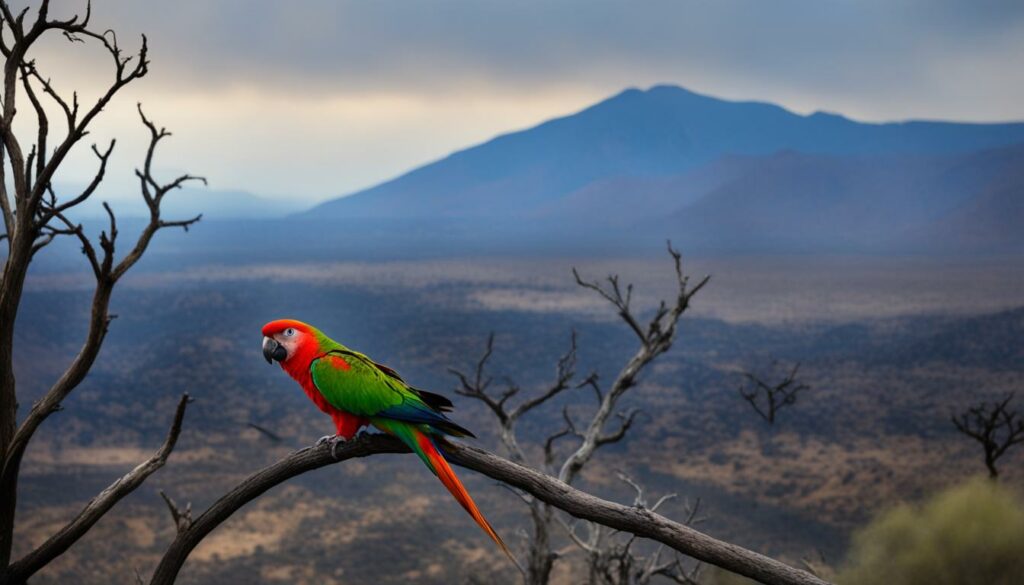
Climate change is really starting to affect parrots. It’s messing up their ways of moving and when they breed. These changes force birds to adapt or they could disappear forever.
People making more farms and cutting down trees has made the parrot’s habitat loss worse. Conservationists are working hard to protect these birds. They say it’s key to save their living spaces and think about climate change’s big picture effect on them.
Conservation Efforts and How You Can Help
Parrot conservation aims to protect USA parrot species and their homes. It’s important because the Carolina Parakeet is extinct. The Thick-billed Parrot is also endangered. So, efforts are now on protecting their habitats. For instance, by planting trees and making special areas for them.
To make a difference, community help is vital. You can support groups like the American Bird Conservancy and the National Audubon Society. This supports important studies and work to keep these birds safe. Pushing for laws against illegal selling is also crucial. Such rules protect the birds and their homes from harm.
It’s easy for anyone to help save parrots. Start by not buying exotic birds. This simple act can stop illegal selling and help their numbers to grow. Also, teaching others about parrot conservation is a big step. By doing so, you help grow a community that cares. Together, we can make sure these important birds have a future.

